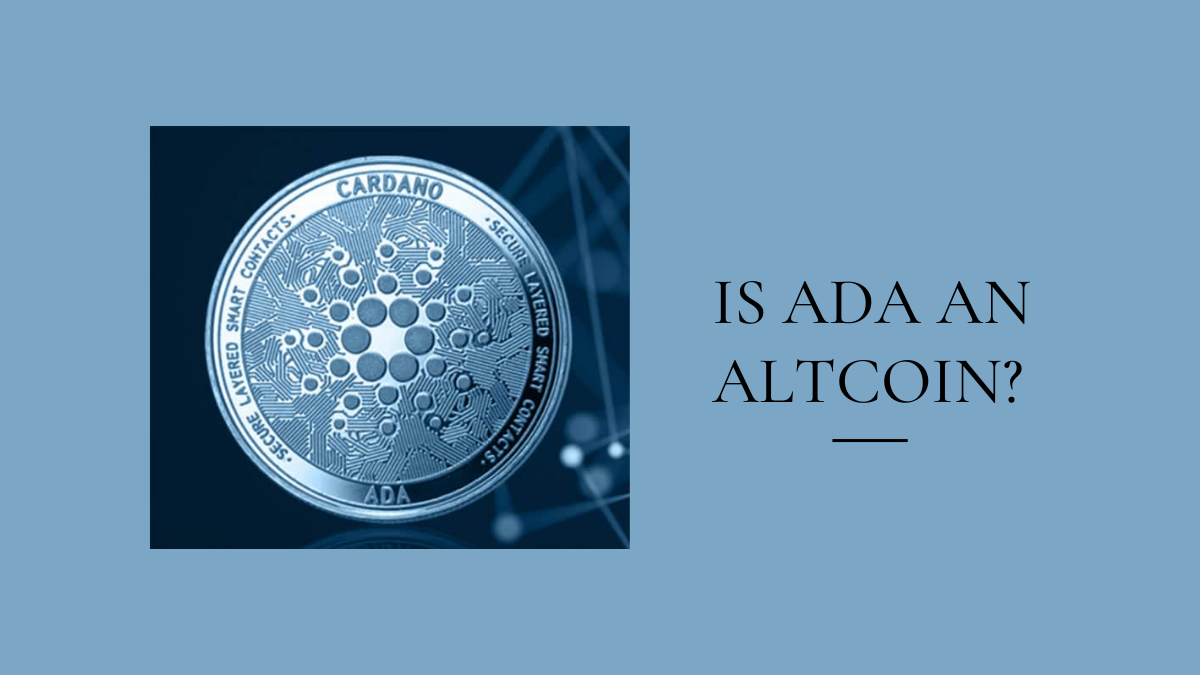Is ADA An Altcoin?
Today, we are diving into the exciting world of digital currencies to unravel a burning question: Is ADA an altcoin? With the meteoric rise of cryptocurrencies and their ever-expanding presence in our lives, it’s crucial to understand the distinctions between different tokens. Cardano’s ADA has been making waves lately, capturing attention with its innovative blockchain technology and ambitious roadmap. So let’s embark on this journey together as we explore what makes ADA unique and whether it truly falls under the altcoin umbrella. Get ready for some eye-opening insights that will navigate you through this intriguing cryptocurrency landscape.
What is ADA?
ADA is the native cryptocurrency of the Cardano blockchain platform. Cardano is a decentralized, open-source blockchain that aims to provide a secure and scalable infrastructure for the development of smart contracts and decentralized applications (DApps). The platform is designed to address several key challenges faced by other blockchain projects, including scalability, sustainability, and interoperability.
ADA serves as the fuel for transactions and operations within the Cardano network. It can be used for various purposes, such as making payments, staking for block validation, participating in the platform’s governance, and funding projects through the treasury system.
Cardano was founded by Charles Hoskinson, one of the co-founders of Ethereum, and the development of the platform is backed by the Cardano Foundation, Input Output Hong Kong (IOHK), and Emurgo. The project is known for its scientific approach, research-driven development, and commitment to peer-reviewed protocols.
Due to its focus on innovation, sustainability, and a rigorous academic approach, ADA has gained significant attention and popularity in the cryptocurrency space. It is traded on various cryptocurrency exchanges and is considered one of the prominent altcoins in the market.
ADA History
ADA was created in early 2017 as an alternative cryptocurrency to Bitcoin. The ADA token is used on the Ethereum network and is intended to be used as a means of payment.
ADA has been described as a “second generation” cryptocurrency, having improved upon some of the problems with earlier cryptocurrencies such as Bitcoin. One such improvement is that ADA transactions are reportedly faster than those conducted with Bitcoin.
The total supply of ADA is set at 100 million tokens, with 50% of these tokens allocated for sale during the initial coin offering (ICO) held in October 2017.
ADA Economics
Cardano (ADA) is a prominent altcoin known for its innovative blockchain platform and cryptocurrency. The economics of ADA are designed to support a secure, decentralized, and sustainable network.
Here are some key aspects of ADA’s economics:
- Supply Limit: The maximum supply of ADA is capped at 45 billion tokens. Unlike some cryptocurrencies, ADA does not have a fixed supply limit; instead, it has an inflationary model that gradually increases the supply over time.
- Proof-of-Stake (PoS) Consensus: Cardano utilizes a PoS consensus mechanism, where ADA holders can participate in block validation by staking their tokens. The more ADA an individual stakes, the higher the chance of being chosen to validate blocks and earn rewards.
- Staking Rewards: ADA holders who participate in staking can earn rewards in the form of additional ADA tokens. These rewards are an incentive to keep the network secure and decentralized.
- Treasury System: Cardano incorporates a treasury system, where a portion of transaction fees and staking rewards are allocated to fund future development and community initiatives. This self-sustaining model ensures ongoing network improvement and innovation.
- Governance: ADA holders have the opportunity to participate in the governance of the Cardano ecosystem by voting on proposed changes and upgrades. This decentralized governance model aims to give stakeholders a voice in the network’s evolution.
- Decentralization and Sustainability: Cardano is committed to achieving full decentralization by gradually transitioning control of the network from a central authority to community participants. The focus on sustainability ensures the long-term viability of the ecosystem.
- Interoperability: ADA is designed to be compatible with other blockchains, fostering interoperability and enabling seamless integration with various decentralized applications and systems.
Cardano’s economic model emphasizes security, scalability, and sustainability, making it a prominent player in the cryptocurrency space. As the platform continues to evolve and undergo upgrades, its economics will play a vital role in maintaining the network’s stability and growth.
ADA Development
ADA is an altcoin, but it is not a scam. It has real potential and many people are investing in it. ADA is a new cryptocurrency that was created in January 2017. It uses the same blockchain technology as Bitcoin, but with improved features.
One of the main benefits of ADA is that it can be used to pay for goods and services. This makes it unique compared to other cryptocurrencies. Another advantage is that ADA has a wide range of applications. This means that it can be used in a variety of ways, including payments, remittances, and investments.
There are several reasons why ADA has been popular so far. First, it is relatively new compared to other cryptocurrencies. This means that there is still room for growth. Second, its applications are varied, which makes it appealing to many people. ADA is also easy to trade and store online.
Conclusion
ADA is definitely an altcoin, and it could be a good investment for those who are looking for a new coin to invest in. However, there are several other Altcoins that offer better returns on investment, so it’s best to do your research before investing any money in ADA.






